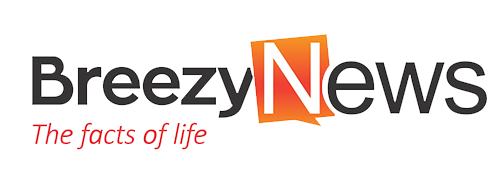*By Philip Odiakose*
The media landscape in Nigeria faces a significant challenge due to the absence of a functional Audit Bureau of Circulations (ABC). This gap critically hampers the ability of PR, advertising, and media professionals to access accurate audience reach data and insights, which are essential for evaluating the impact of media publications. The repercussions are far-reaching, affecting the credibility and effectiveness of media monitoring, and consequently, the strategic decisions of brands leveraging media to tell their stories.
The ABC was originally established more than three decades ago to monitor and verify newspaper circulation figures. Founded in 1948 as a not-for-profit, voluntary organization consisting of publishers, advertisers, and advertising agencies, ABC pioneered audit procedures to certify the circulation figures of its member publications. However, the organization became dormant due to general financial difficulties in sustaining its operations and because it revealed low circulation figures for many newspapers. This situation adversely affected newspapers’ advertising operations, leading most to default on their contributions to ABC. As a result, reliable newspaper circulation figures are no longer available, leading to frequent disputes over claims made by newspapers regarding their circulation figures.
In today’s media environment, PR and advertising professionals require concrete facts and figures before investing in media placements. They need to know how many people are buying a publication and in which areas. The ABC provided these vital statistics every six months, based on rigid, in-depth, and impartial audits of paid circulation by independent firms of Chartered Accountants, following the Bureau’s prescribed rules and procedures. These figures were not based on opinions, claims, or guesswork but were the result of thorough audits. Unfortunately, without the ABC, this reliable data is no longer available.
The lack of broadcast ratings in Nigeria further complicates the situation. While some broadcast outlets make bold claims about their audience size, these claims are often unsupported by verifiable data. This absence of accurate audience metrics means that PR and advertising professionals are making decisions based on unsubstantiated claims, which undermines the effectiveness and accountability of their media strategies.
In Nigeria, ABC affiliation was once signified by a logo appearing at the bottom strip of the back cover page of newspapers. This was a confirmation that the publication belonged to the organization. However, there was no full disclosure about the actual number of copies being printed. The figures brandished by media managers are often inflated, sometimes as much as ten times the actual print runs. This discrepancy is especially glaring given that Nigeria had a literacy rate of approximately 77.62% in 2021, according to GlobalData.
Media managers often overlook that determining the actual print run in Nigeria is relatively straightforward. Print runs can be estimated by collating supply figures to various distribution centres nationwide since most media houses use the same distribution networks. Additionally, print run figures are typically posted on printing machines as a standard practice, and those involved in the printing process, such as wrappers, collators, and drivers, can be “enticed” to reveal these figures. The sales departments of media companies are also managed by known faces, making it possible to obtain and cross-verify these figures. Consequently, the total copies offered for sale, subscriptions, and complimentary copies can be estimated with a margin of error of less than 5%.
The absence of a functional ABC hinders brands from understanding the true value of their stories in publications. Without reliable circulation data, media monitoring and intelligence agencies struggle to provide accurate audience reach analyses, which are essential for PR and advertising professionals to demonstrate the ROI and ROO of their campaigns. This gap not only affects strategic decision-making but also undermines the credibility of the media monitoring process.
The call for reinstating the ABC in Nigeria is not just about transparency and accountability; it is about empowering PR, advertising, and media professionals with the tools they need to succeed. A functional ABC would ensure that circulation figures are based on rigorous and impartial audits, providing a solid foundation for media investment decisions. It would restore confidence in the media industry, allowing brands to optimize their strategies and achieve their communication objectives effectively.
In conclusion, the absence of a functional Audit Bureau of Circulations in Nigeria significantly hampers the ability of PR, advertising, and media professionals to access reliable audience-reach data and insights. This gap affects the perceived value of media publications, undermines strategic decision-making, and diminishes the overall effectiveness of PR and advertising campaigns. Reinstating the ABC is crucial for enhancing transparency, accountability, and data accuracy in the Nigerian media landscape. By doing so, we can ensure that PR, advertising, and media professionals are equipped with the reliable data they need to drive successful media engagements and foster a more credible and effective media industry.
Call to Action:
It is imperative that the media industry stakeholders in Nigeria come together to revive the Audit Bureau of Circulations. This collective effort will ensure the availability of accurate and reliable data, which is essential for the growth and credibility of the media industry. By advocating for the reinstatement of the ABC, we can build a more transparent and accountable media environment that benefits all stakeholders.
Philip Odiakose is a leader and advocate of Media Monitoring, PR measurement and evaluation in Nigeria. He is also the Chief Media Analyst at P+ Measurement Services, a member of AMEC







